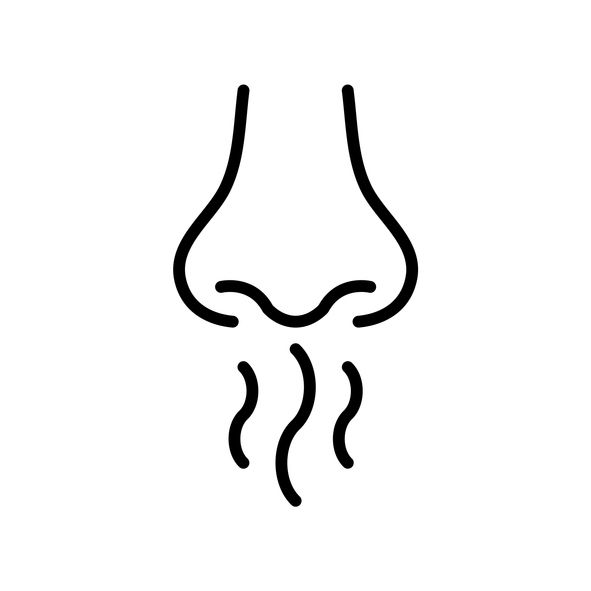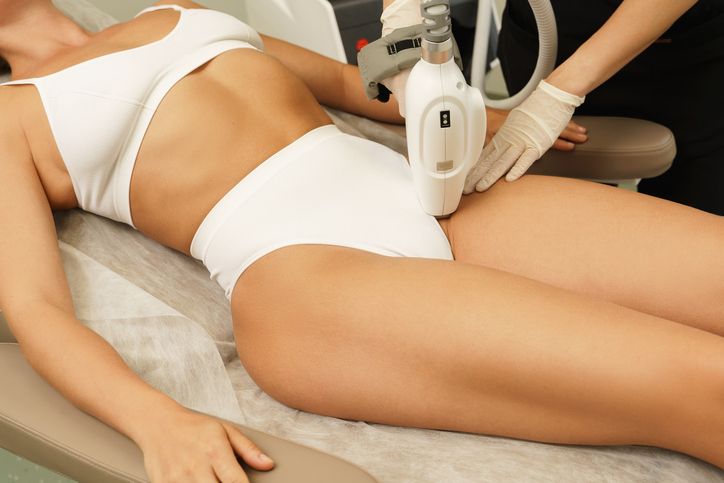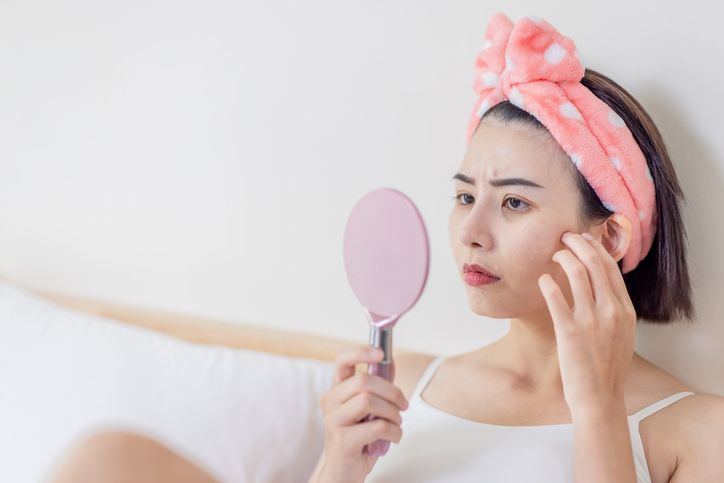- Home
- Trend
- Weight Loss Strategies
- Acne Tips
- Hair Health Information
- Blemish Removal Tips
- Acne Scar Removal Tips
- Muscle Building Techniques
- Intimate Care Tips
- Postpartum Intimate Care
- Eye Bags Wiki
- Tips for Face Slimming
- Secret of Permanent Hair Removal
- Breast Enlargement Tips
- Cure to Snoring
- Marionette Lines
- Skin-Tightening Secrets

免費體驗
Fotona 4D NightLase Snoring Treatment
1 Minute Self-Registration
Date should not be before minimal date
Tired of restless nights due to snoring? Nasal strips might be the solution you're looking for. Snoring can disrupt not only your sleep but also that of your partner. In this comprehensive guide, we'll delve into the world of nasal strips for snoring, exploring their mechanism, benefits, and how they can help you breathe easier and sleep better.
1
What are Nasal Strips and What Are They Made of?

Nasal strips are adhesive strips that adhere to the outside of the nose, gently lifting the nostrils open. They work by expanding the nasal passages, allowing air to flow more freely through the nose. This can significantly reduce the vibrations in the throat that cause snoring, leading to quieter and more restful sleep.
Most of the time, they are typically made of flexible, lightweight materials. The key component of these strips is the adhesive portion that sticks to the skin of the nose. This adhesive section is connected to a plastic or flexible band that runs across the bridge of the nose.
The adhesive on the strip is usually a hypoallergenic material, which means it is less likely to cause skin irritation or allergic reactions. It adheres gently to the skin and can be easily removed without leaving a residue or causing discomfort.
The plastic or flexible band that runs across the bridge of the nose is designed to provide external support to the nasal passages. When the strip is applied, the band helps to widen the nostrils slightly and lift the sides of the nose. This action can help to open up the nasal passages, allowing for improved airflow and potentially reducing snoring or the sensation of congestion.
2
How Do Nasal Strips Work To Stop Snoring?

Nasal strips operate through a straightforward yet efficient mechanism. When these strips are affixed to the nose, they generate a gentle pulling or tension on the nostrils. This action serves to open nasal passages and make it wider, which can often become constricted due to various factors such as nasal congestion or the natural shape of an individual's nasal anatomy. Consequently, the augmented airflow resulting from the widened passages leads to a reduction in the speed at which air moves through the throat. This decrease in air velocity plays a crucial role in diminishing the likelihood of producing the sound of snoring.
By facilitating improved nasal airflow and decreasing the force of air passage through the throat, they contribute to minimising the vibrations of tissues in the throat that cause the distinctive sound of snoring. It's important to note, however, that while nasal strips can be effective for mild cases of snoring linked to nasal congestion or narrow passages, they might not provide significant relief for snoring caused by more complex underlying factors. In such cases, a comprehensive evaluation by a healthcare professional is advisable to identify the most suitable solutions.
What is the difference between external nasal strips and external nasal dilators?
External nasal strips and external nasal dilators are both devices designed to improve nasal airflow, but they operate in slightly different ways.
* External nasal strips are adhesive strips that are applied externally across the nose. These strips contain an adhesive portion that sticks to the skin on the outside of the nose. They also feature a flexible band that spans the bridge of the nose. The adhesive pulls gently on the nostrils, causing them to widen. This action helps to open up the nasal passages, which can become congested or narrow due to various factors. By increasing the space within the nasal passages, external nasal strips promote better airflow, making it easier to breathe through the nose. They are often used by individuals who experience temporary congestion, such as during colds or allergies, as well as to reduce snoring.
* External nasal dilators, on the other hand, are devices that are also applied externally to the nose, but they work by a different principle. These dilators are often made of soft, flexible materials and are inserted into the nostrils rather than being placed on the outside of the nose. Once inserted, the dilators expand and help to physically widen the nostrils from the inside. This expansion increases the size of the nasal passages, allowing for improved airflow. External nasal dilators are commonly used by athletes to enhance their breathing during physical activities and by individuals who experience nasal congestion. They can be particularly helpful for people with structural issues in the nasal passages that might lead to difficulty breathing.
While both external nasal strips and external nasal dilators aim to improve nasal airflow, the former achieves this by gently pulling on the external skin of the nose to widen the nostrils, while the latter involves inserting soft dilators into the nostrils to physically expand them from the inside. The choice between the two depends on individual preferences, comfort, and the specific breathing concerns a person may have.
3
Benefits of Using Nasal Strips

Immediate relief
Nasal strips are different from some other ways to stop snoring because they work right away. As soon as you put one on your nose, you'll feel the relief. You don't have to wait for a long time to see the results.
Non-invasive
Using nasal strips is really simple. You don't need any surgeries or medicines. They are like stickers that you put on the outside of your nose. They're easy to use and don't make you uncomfortable.
Improved sleep quality
When you wear nasal strips, they help air move more easily through your nose. This can make your sleep better. Not just for you, but also for the person who sleeps next to you. If you snore less, everyone can sleep more soundly.
Travel-Friendly
Imagine if you're going on a work trip or a vacation. You might be in a different place and time zone. Nasal strips are great because they're small and simple to pack. You can use them anywhere, so you can keep your good sleep routine even when you're away from home.
Using nasal strips can be a really easy and quick way to make both your sleep and the sleep of those around you better. They're like a small helper for your nose that can bring you comfort and better rest, no matter where you are.
4
How to Use Nasal Strips

Using nasal strips the right way is really important to get the best results. Here's a simple guide to follow:
1. Start with Clean Skin
First, make sure your skin is clean and dry. Don't put any creams or lotions where you'll be putting the strip.
2. Peel off the Backing
Carefully take off the paper on the back of the strip. Be careful not to touch the sticky part.
3. Place the Strip
Put the strip right in the middle of your nose. The little tabs on the sides should go toward your cheeks.
4. Press Down and Lift the Tabs
Press the strip down gently so it sticks well. Then, slowly lift the tabs up a bit. This makes the strip work better.
5. Breathe Deeply
Take a deep breath. You might notice that it's easier to breathe through your nose now. The strip is helping your nose passages open up.
6. Removing the Strip
When you're ready to take the strip off, do it slowly and gently. This way, you won't feel any discomfort.
Using a nasal strip is like a simple dance: clean your skin, stick the strip in the middle of your nose, press down, lift the tabs slightly, take a deep breath, and when it's time to say goodbye, remove the strip slowly. It's an easy way to help your nose do its job better!

免費體驗
Fotona 4D NightLase Snoring Treatment
1 Minute Self-Registration
Date should not be before minimal date
5
Getting the Right Nasal Strips Are Not Enough: 10 Ways To Reduce Nasal Airway Resistance

1. Adjust Sleeping Position
Changing your sleeping position can have a significant impact on reducing snoring. If you tend to snore while sleeping on your back, try switching to sleeping on your side. This simple adjustment can prevent your tongue and soft palate from collapsing to the back of your throat, which is a common cause of snoring.
2. Weight Management
If you are overweight, losing excess weight can be an effective way to reduce snoring. Extra weight, especially around your neck, can put pressure on your throat and narrow the airway, leading to snoring.
3. Avoid Alcohol and Sedatives
Alcohol and sedatives have a muscle-relaxing effect on the throat muscles, increasing the likelihood of them collapsing and causing snoring. It's advisable to steer clear of these substances, especially in the evening.
4. Stay Hydrated
Proper hydration is essential for minimising snoring. Dehydration can lead to thicker and stickier mucus in your throat and nose, which can contribute to snoring. Drink an adequate amount of water throughout the day.
5. Nasal Irrigation
Using a saline nasal spray or performing nasal irrigation before bedtime can help keep your nasal passages clear and reduce congestion. This, in turn, improves airflow and reduces the likelihood of snoring.
6. Elevate Your Head
Elevating your head slightly by using a thicker pillow or adjusting the head of your bed can help prevent the collapse of the tongue and soft palate at the back of your throat. This simple change can keep your airways open during sleep.
7. Oral Devices
There are specially designed oral devices that you can wear while sleeping. These devices work by repositioning your jaw and tongue to maintain an open airway, effectively reducing snoring.
8. Breathing Exercises
Practising specific breathing exercises during the day can strengthen the muscles in your throat, leading to improved airflow and a reduction in snoring.
9. Treat Allergies
If allergies are causing nasal congestion, consider treating them with antihistamines or other allergy medications. Addressing allergies can help alleviate congestion and reduce snoring.
10. Medical Interventions
In cases of severe snoring or sleep apnea, medical interventions may be necessary. These can include Continuous Positive Airway Pressure (CPAP) therapy, surgical procedures to correct structural issues in the airway, or the use of dental appliances prescribed by a healthcare professional. Consultation with a medical specialist is advisable for more serious snoring concerns.
Remember, the effectiveness of these methods can vary from person to person. If snoring is persistent and causing disruptions in your sleep or your partner's sleep, it's a good idea to consult a medical professional for proper evaluation and guidance on the best approach for your specific situation.
6
Let There Be Good Sleep: Eliminate Snoring And Breath Right with Perfect Medical

We all know how troublesome and disruptive snoring can be, not to mention the health concerns it can raise. It's not just about the noise; it can signal underlying issues that need your attention. So, for the sake of your well-being and the peace of mind of your loved ones, addressing snoring issues promptly is essential. But here's the good news: there's a solution that's both painless and non-invasive – the Fortona 4D Nightlase Snoring Treatment. And the best part? Each session is a mere 15 minutes long!
This cutting-edge treatment harnesses the remarkable power of patented NIGHTLASE™ laser technology. Imagine a precise, low-temperature laser energy gently applied to various oral tissues. It's like a therapeutic touch, tightening those obstructive areas in your oral cavity and giving your collagen structure a makeover through photothermal magic.
The result is remarkable: better airflow and a significant reduction in snoring and sleep apnea issues. Many people notice improvements after just one session. This treatment isn't just about restoring peaceful nights; it's about rejuvenating your days, enhancing your overall well-being, and boosting your work performance. Don't let snoring hold you back; reclaim your restful nights and revitalised days with Fotona 4D Nightlase Snoring Treatment!
7
Conclusion

Snoring can take a toll on your sleep quality and overall well-being. Nasal strips offer a convenient and non-invasive solution to help you and your partner enjoy quieter nights and better rest. By understanding how nasal strips work, their benefits, and proper usage combined with the right snoring treatment like Perfect Medical's Fortona 4D Nightlase Snoring Treatment, you can take control of your sleep and wake up refreshed and revitalised!

免費體驗
Fotona 4D NightLase Snoring Treatment
1 Minute Self-Registration
Date should not be before minimal date
FAQ

1. Can anyone use nasal strips?
Nasal strips are generally safe for both adults and children as an over-the-counter solution to address breathing difficulties, snoring, or nasal congestion. However, individuals with skin allergies or sensitivities should consult a healthcare professional before using them. Additionally, for those dealing with chronic nasal obstruction issues, it's advisable to seek professional guidance for more suitable treatments.
2. Do nasal strips and internal nasal dilators work the same way?
No, they don't. Nasal strips and internal nasal dilators are two distinct solutions for addressing breathing difficulties. Nasal strips work externally by physically opening the nasal passages, while internal nasal dilators are inserted inside the nostrils to help maintain airflow. The choice between them depends on individual preferences and the specific issue being addressed.
3. Can nasal strips replace medical treatments for sleep apnea?
Nasal strips should not be considered a substitute for medical treatment when it comes to sleep apnea. If you suspect you have sleep apnea or have been diagnosed with it, it's crucial to consult a healthcare professional for a proper diagnosis and guidance on appropriate treatment options. Sleep apnea is a serious condition that requires specialised medical care.
4. How long can I wear a nasal strip?
Nasal strips are typically designed for single-use and are intended to be worn during sleep. It's essential to follow the manufacturer's instructions for the recommended duration to achieve the best results. Using them for longer periods than recommended may lead to reduced effectiveness.
5. Do nasal strips come in different sizes?
Yes, nasal strips are available in a variety of sizes to accommodate different nose shapes and sizes. Choosing the right size is important to ensure a secure and comfortable fit, maximising their effectiveness in improving airflow and reducing snoring or nasal congestion.








